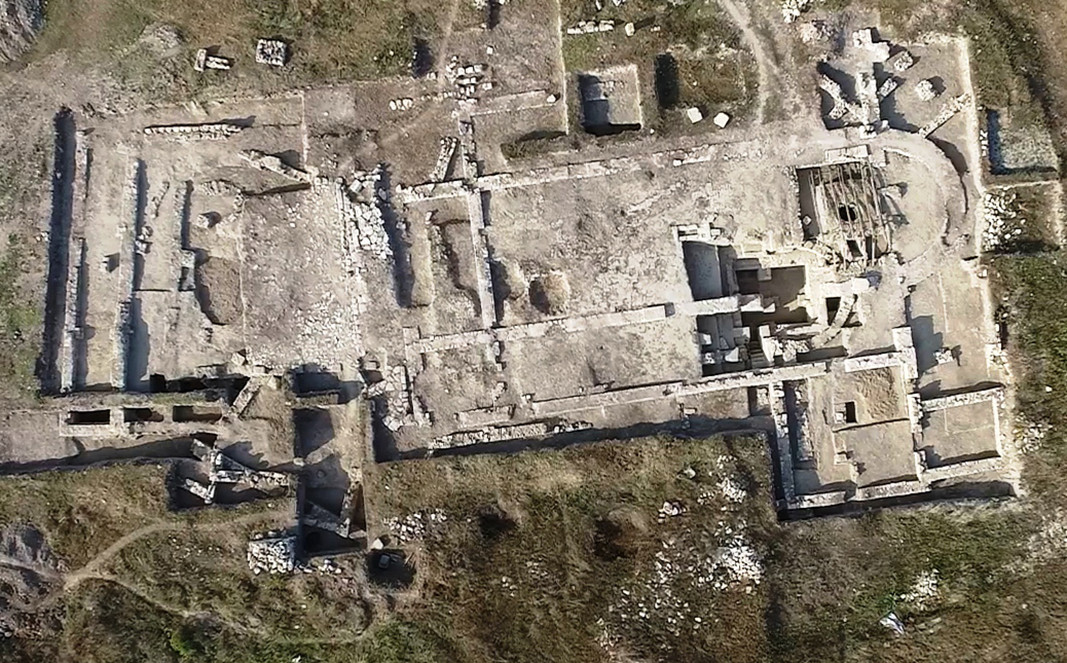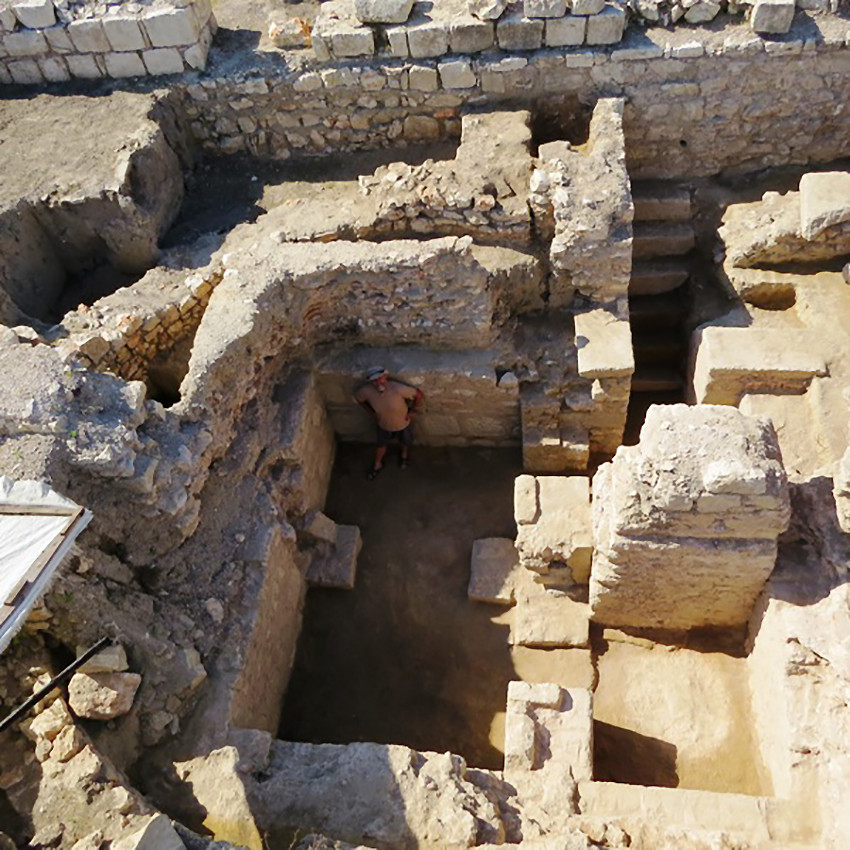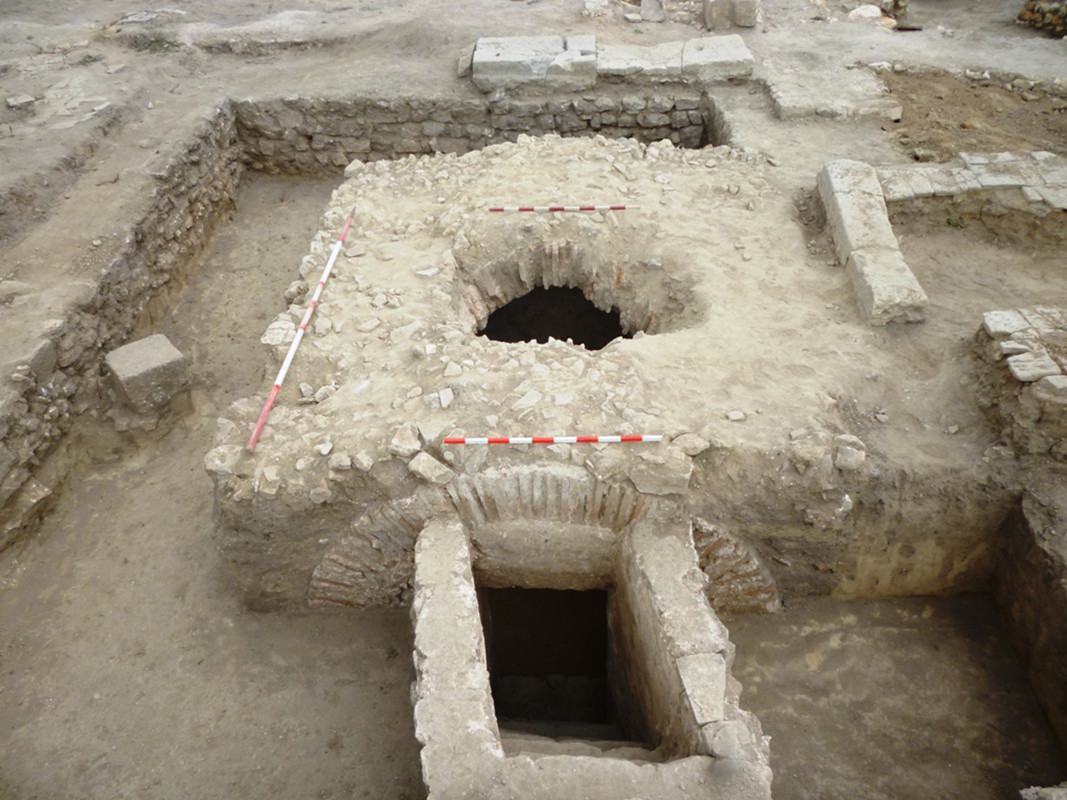 10
10
The ancient city of Zalpada was first explored in 1906-1910 by the “father of Bulgarian archaeology” Karel Škorpil, and these studies revealed that its foundations were actually laid by Constantine the Great at the beginning of the 4th century near what is now the village of Abrit in Dobrudzha.

One more thing Zalpada is famous for is that it is the birth place of a renowned Byzantine military commander – Vitalian – leader of two rebellions against the central government, and self-proclaimed emperor in the first years of the 6th century. At the time, the fortified city was a prominent Christian centre in this portion of the empire and there are remains of 6 early Christian churches from the 4th to the 6th century to show for it, says Prof. Georgi Atanasov, head of an international team with members coming from Bulgaria, France, Canada, Albania and Italy researching the site.
“Two years ago we hit the jackpot in Zalpada – we discovered an extraordinary church shaped like a tetraconch,” Prof. Atanasov says. It was covered with huge glass windows, so the light was able to freely penetrate and light up the beautiful frescoes. The glass church was topped by a dome and had multiple arches which gave it an ethereal look:
“With its magnificent, fully preserved marble decorations, remarkable pulpit from which the bishop preached, dozens of capitals…,” Prof. Atanasov says and goes on: “But the most thrilling part was when we discovered the floor mosaic. The entire church floor was covered in mosaics, very well preserved.

There are two similar tetraconch churches in Bulgaria – one in Perushtitsa and one in Stara Zagora. Throughout the entire Christian world – Asia, North Africa and Europe – no more than 30 such churches from this epoch have been found. To date, with the active help of the international team, we have unearthed 70% of its plan.”
Underneath the episcopal residence archaeologists discovered an earlier church dated to the end of the 4th century with the biggest crypt for holy relics in the Bulgarian lands. It has three sections and is covered in frescoes.

“The five big crypts make Zalpada unique, they show there was a bishop here, and also that the town held a high legitimacy status and had benefactors generous enough to turn it into a foundation stone of Christian culture and civilization in this part of the Roman Empire,” Prof. Atanasov says.
It turns out that in Zalpada practically every church has big crypts for holy relics. But what baffled archaeologists was that instead of containing parts of bodies the reliquaries actually contained… the whole bodies! Why?

“According to the church calendars and passionals, there were around 140-150 early Christian saints in Dobrudzha during the waves of persecution at the beginning of the 4th century. There is no other province in the Balkan Peninsula or in Central Europe with as many martyr saints all in one place. And as Roman law gave even criminals the right to be buried, these early Christians who had been burnt or slaughtered were entitled to a grave. And when Christianity became the official religion, after Constantine the Great, Christians were able to take the relics out of the necropoli and put them inside the churches to sanctify the altars, a practice that is unique in the entire Balkan Peninsula, and even further afield,” Prof. Georgi Atanasov says.
Photos courtesy of Prof. Georgi Atanasov
26 years ago, on 30 September, at the initiative of the Bulgarian Orthodox Church (BOC), a Pan-Orthodox Council was convened in Sofia to resolve the schism within the Bulgarian clergy . Then, despite the efforts of Patriarch Bartholomew of Istanbul to..
The head of a statue has been unearthed during excavations in the great canal of the ancient city of Heraclea Sintica located in Southwestern Bulgaria, close to the town of Petrich. The head longs to the statue that was discovered a few days ago..
From 23 to 28 September, Sofia and Vidin will host the 7th International Conference on the Roman Danubian Provinces on the theme "Frontier Landscapes along the Danube", reports BNR Vidin. The initiative was taken by the University of Ferrara, Italy...
The Feast of the Epiphany - the entry of the Theotokos into the Temple - is one of the oldest and most revered feasts in the Orthodox world. It was..
The Museum of the Jewish People in Tel Aviv , Israel, today commemorates the 130th anniversary of the birth of Dimitar Peshev, a righteous man of the..
On November 22 and 23, the Bulgarian Orthodox Church will solemnly celebrate the 100th anniversary of the consecration of the Patriarchal Cathedral "St...

+359 2 9336 661
